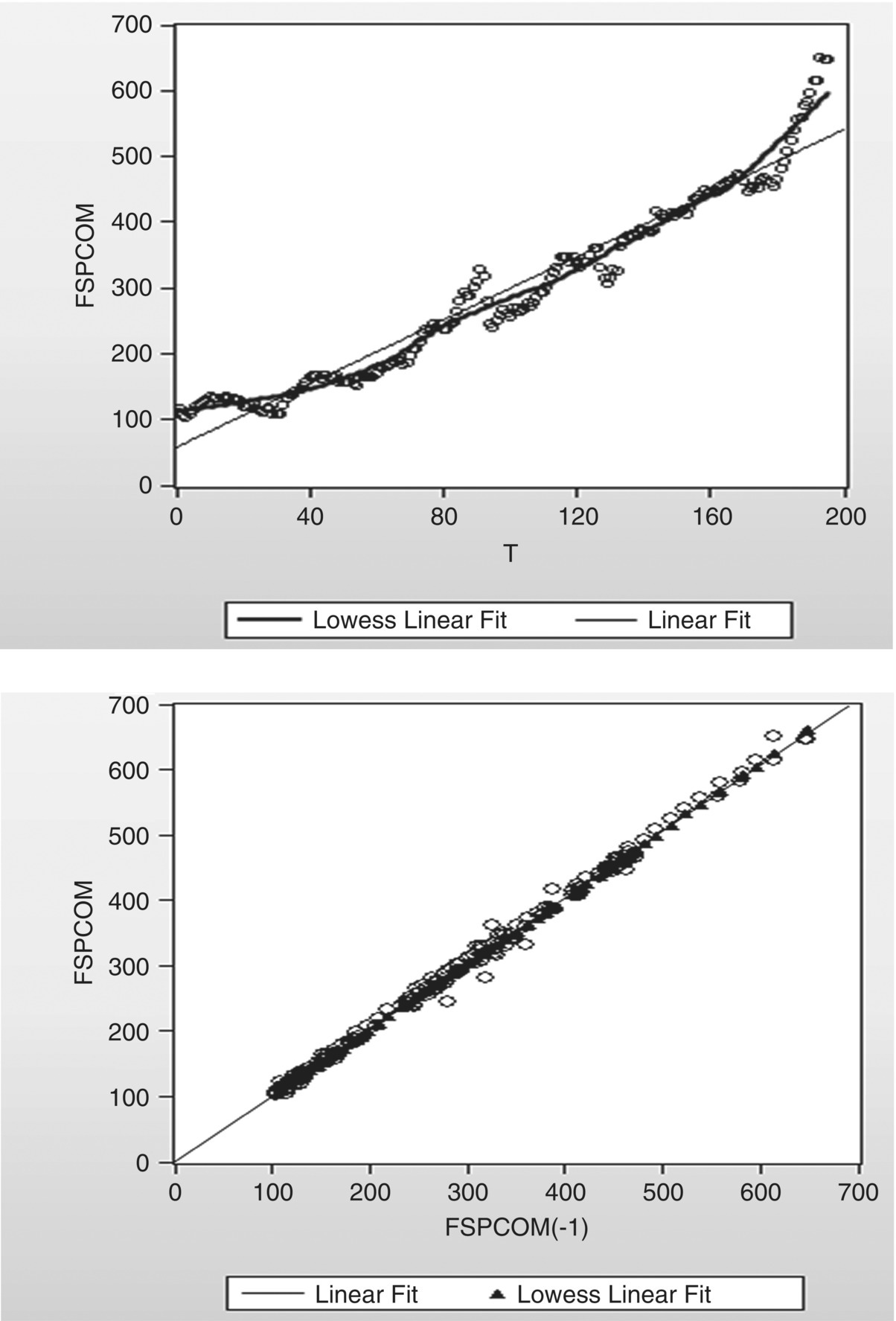3Continuous Forecast Models
3.1 Introduction
This chapter presents a particular type of forecast model, namely continuous forecast models, models without dummy predictors, or models with numerical independent variables only, based on selected monthly time series. I have found that a monthly time series in EXER15_5.wf1, namely FSPCOM= S&P'S COMMON STOCK PRICE INDEX: COMPOSITE (1941–43 = 10), can be used to present illustration of various forecast models. Compared to the growth patterns of the two time series HS and G with dummy variables, FSPCOM has other types of growth curve, which can easily be identified using its growth curve on @TREND or the time t = @TREND + 1, and FSPCOM(−1) as presented in Figure 3.1.

Figure 3.1 Scatter graphs of FSPCOM on the time T and FSPCOM(−1) with regression lines and NNFs.
In fact, the work‐file contains two monthly time series, namely FSPCOM and RCAR6T = RETAIL SALES: NEW PASSENGER CARS, TOTAL DOMESTICS + IMPORTS (THOUSANS). So I would say that all types of models presented in Chapters 1 and 2 for the monthly time series HS and G, could also be applied for FSCOM and RCAR6T, in addition to the continuous forecast models. Referring to all specific forecast models based on a single time series Yt presented in Chapter 1, based on FSCOM and log(FSPCOM), similar models also can easily be applied. Do these for some exercises.
However, based on the two ...